So you wanna get more chin-ups, eh? Please allow me to assist you in achieving this feat. There are many ways to go about it, so rather than just naming my favorite method, I’m going to cover a variety of the most popular methods and techniques used by lifters and coaches to increase your ability to get your chin over the bar – either with more reps, or with more weight. Will these methods work for you? You bet!
Before I delve into the article. it’s important to cover the key differences between the chin-up, pull-up and neutral grip pull-up, as many people do not know the difference. The chin-up is performed with a supinated grip, which essentially means that your palms will be facing you. The pull-up is performed with the palms pronated, which means that they’ll be facing away from you. And the neutral grip, sometimes referred to as the parallel grip, is performed with the palms facing each other.
Form
The first thing I want to cover is chin-up form. Should you just get your chin over the bar, touch your clavicles, or touch the bar lower on your chest? Should you start from a dead hang or keep the shoulders and elbows flexed slightly? The truth of the matter is that each of these subtleties have different benefits and are all acceptable types of chin-up form in different groups of people.
Personally, if my clients can tolerate chin-ups well, I prefer that they start from a dead hang (while maintaining tension) and touch their upper sternum to the bar. If you always utilize a full range of motion (ROM) when performing chin-ups, then when you set personal records (PR’s) you’ll know it’s due to true strength gains rather than just skimping on ROM.
Grip Positioning
We already covered the three primary grip positions when performing chin-ups/pull-ups. The chin-up is performed using a supinated grip which places a greater emphasis on the biceps and moves the shoulders through a greater range of motion. The pull-up is performed using a pronated grip and places a greater emphasis on the mid and upper back, as well as the brachialis and brachioradialis muscles. The neutral grip pull-up is performed with palms facing each other which distributes weight more evenly amongst the joints and is easiest on the wrist, elbows, and shoulders. Therefore, the neutral grip is usually best for beat up lifters and is safest over the long run (which most youngsters don’t tend to consider until it’s too late).
Bottom Line: Choose a hand position the feels most comfortable and one which coincides with your goals
Range of Motion
The most important rule when it comes to pull-up technique (and all exercise technique) is to move through a pain-free range of motion. If this means your shoulder starts to bother you when you start and finish every rep from a complete dead hang position, then stay away from the portion of the range of motion that causes you pain. Along the same lines, if touching your clavicles to the bar consistently elicits pain, then don’t go up so high and just go to where the chin passes the bar. Some people find that tweaking their grip width or using rings allows them to achieve pain-free full ROM. Over time, as you gain comfort and confidence with the movement, you may find that the pain experience vanishes.
Bottom Line: Move through a pain-free range of motion
Tension
Keeping tension in the lats and surrounding musculature of the shoulder and scapulae is important for shoulder health and movement. At the bottom of the pull-up, you should still have tension in your armpit. The dead hang term causes trainees to believe that they should be completely relaxed in the bottom position of the movement, but please do not do this as this will place unnecessary and unwanted stress on the shoulder.
Bottom Line: Keep tension in the lats and scapular muscles at the bottom of the movement
Scapular Movement
During the chin-up, the scapula SHOULD MOVE. The recent outburst of the cue to keep the shoulders down and back left some trainees down for the count. This cue can give the perception that during the chin-up, the trainee should keep their shoulders pinned down and back (the shoulder packed cue can also infer this pattern). This can be a recipe for disaster, especially for lifters who have had prior shoulder issues or are prone to injury. The video below portrays proper scapulohumeral rhythm. Granted, under heavy loading, the scapulae might not move as much, but the point is that you don’t want them completely pinned down.
In a proper chin-up (or any overhead movement), the scapula upwardly rotate when the arms are raised overhead (the eccentric phase of the pull-up) and downwardly rotate during the concentric phase of the lift. Moreover, the scapula will depress slightly during the concentric phase and elevate slightly during the eccentric phase, which coincides with the scapular rotation. The lifter should allow the shoulder blades to glide over the ribs during the movement but understand to keep them stabilized and under control throughout. A helpful cue would be to think of the scapula as being sticky – moving freely but under control.
Moreover, the scapula should not anteriorly tilt, so make sure the shoulders don’t round forward at the top of the movement and the chest stays tall (without excessively overarching the spine). It’s difficult to make general recommendations as lifters vary in anatomy, motor control, and interpretations of cues – it’s much easier when working with people one on one. Nevertheless, there should be a natural rhythm that progresses gradually throughout the ROM.
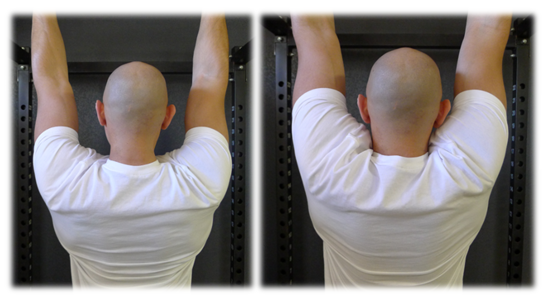
LEFT- shows improper scapula positioning (lifter has pinned shoulders down and back which restricts movement. RIGHT- shows a more safe and healthy scapula which is upwardly rotated
Bottom Line: Find a healthy balance of movement and stabilization in the scapula
Cheating
Swinging the Legs
There are several ways in which a lifter may cheat while performing a chin-up. For the sake of this article, any sort of swinging of the legs or heaving of the torso will be considered cheating, as this article is intended to maximize the strict chin-up and not the kipping variation. Some slight leg swing is acceptable, but keep this under close control. Swinging the legs during the initial ascent offers a mechanical advantage to the lifter. This is commonly seen during around the time where fatigue starts to set in and lifters begin to struggle.
Bottom Line: Keep your form as strict as possible in training
Overarching the Low Back
Another common mistake when performing the chin-up is allowing excessive arching of the lower back. While arching can improve recruitment of the lats in some cases, it can be a contributor to lower back discomfort. My general recommendation would be to steer clear of this. You don’t need to form a perfect plank while chinning, but keep an eye on lumbar hyperextension and excessive anterior pelvic tilt, especially at the bottom of the movement.
Bottom Line: Keep the midsection braced and maintain the natural curve in your spine
Goals
This first thing to do when designing a chin-up program is to establish your goals. You want to know exactly what it is you are training for, which will enable you base your training on specificity while strengthening your weaknesses. After all, a chain is only as strong as its weakest link.
Rep Record
High Frequency Stair Stepping
When training for a rep record or a maximum number of reps in an allotted amount of time, you want to do a majority of your training with bodyweight. A high frequency approach in which the lifter does not perform the movement to complete failure works best in this regard. For example, if the maximum number of pull-ups a lifter can complete in one set is 15, then the lifter should perform multiple sets but stay well away from fatigue. With this approach, each week will alternate by increasing either the number of sets or the number of reps performed. Here’s an example to be performed four times per week by a lifter who can perform 15 chin-ups for one set:
Week 1: 3 sets of 8 reps with 120 seconds of rest between sets
Week 2: 4 sets of 8 reps with 120 seconds of rest between sets
Week 3: 3 sets of 10 reps with 120 seconds of rest between sets
Week 4: 4 sets of 10 reps with 120 seconds of rest between sets
At the end of the four week period, the lifter’s maximum number of bodyweight chin-up reps will have improved.
Ladders (Grease and Groove)
Pull-up ladders were popularized by Pavel Tsatsouline. This method of greasing the groove is defined by conducting frequent, non exhaustive sets and staying around two reps shy of failure. So the lifter would perform one rep, then rest 20-30 seconds, then perform 2 reps, then rest 20-30 seconds, then perform 3 reps, then rest 20-30 seconds and continue until two reps shy of failure. Some lifters prefer to work their way back down the ladder while others prefer to start back at one rep. I recommend that you experiment with both methods.
Clusters
Cluster sets are characterized by breaking the desired number of reps into smaller sets with short breaks in between. Although this short break doesn’t allow for full recovery between the mini sets, it does allow the lifter to use a weight that he or she would normally not be able to use to complete the desired reps if he or she tried to perform them without stopping. A popular way to perform cluster sets might include performing 3-4 sets of 4×2. The lifter will perform 2 chin-ups, then rest for 10 seconds, another 2 chin-ups, then rest for 10 seconds, another 2 chin-ups, then rest for 10 seconds, and finally another 2 chin-ups. The lifter would then rest for around 2-3 minutes. This would complete the first cluster, which will then be repeated 3-4 times. Sets, reps, and rest periods should be modified to fit your individual needs and initial fitness levels.
Drop Sets
When training for a repetition record, drop sets are performed slightly differently than when training to increase maximum pull-up strength. An example of this would be to perform a set of pull-ups with an external load (ex: weight belt, weighted vest, or dumbbell between the feet), then with as little rest as possible remove the load and continue the set with just bodyweight, then with as little rest as possible continue the set by performing band assisted pull-ups. An example would be to perform 3 pull-ups with a 45-lb plate using a dip belt, then to shed the dip belt and perform 8 reps with just bodyweight, and then perform another 4 reps with a light band for assistance.
Timed Set Records
Escalating Density Training
Escalating density training (also known as EDT) was popularized by Charles Staley. In this form of training, instead of trying to complete a certain numbers of reps in a row, the goal is to complete a greater number of reps in a predetermined amount of time. For example, a 4 week cycle may look like this:
Week 1: 32 reps of bodyweight chin-ups in 10 minutes
Week 2: 38 reps of bodyweight chin-ups in 10 minutes
Week 3: 43 reps of bodyweight chin-ups in 10 minutes
Week 4: 45 reps of bodyweight chin-ups in 10 minutes
Weighted Records
When training to increase your maximal chin-up strength, you want to do a majority of your training with some sort of external load.
Ramping Up
Ramping up will involve utilizing progressively heavier sets with only the heaviest set taken to failure. An example of this follows:
BW x 5 reps, BW+45lbs x 5 reps, BW+70lbs x 5 reps, BW+90lbs x 3 reps
Pyramids
With pyramid sets, the lifter will ramp up, but also include a back off set or two as well. Two examples of a pyramid set follow:
BW x 5 reps, BW+45lbs x 5 reps, BW+75lbs x 5 reps, BW+45lbs x 5 reps, BW x 5 reps,
or
BW x 5 reps, BW+45lbs x 5 reps, BW+70lbs x 3 reps, BW+90lbs x 3 reps, BW x 12 reps
Hypertrophy
Mixed Approach
If maximizing lat musculature is your goal, then a healthy mix of all training techniques will help you on your way to building an impressive back. Pick and choose different approaches to add variety to your workouts. Use progressive overload to increase mechanical tension. Hit some higher rep ranges to elicit metabolic stress, and make sure you control the eccentrics and stretch the lats and elicit tolerable levels of muscle damage. For a more detailed explanation of these methods click HERE.
Variations
There are more methods that can be employed when the goal is to improve chin-up prowess, and the variations one employs will depend on the lifter’s training age, bodyweight, and fitness status.
Novice
Top Position Isoholds
Start in the top position of the chin-up (chin above bar) and hold that position for maximum time.
Band Assisted
A band is looped around the chin-up bar and the other end placed around the foot (easier version) or the knee (harder version). This provides the most assistance at the bottom portion of the movement where the band is stretched further, compared to the top portion of the movement where the band is stretched less.
Eccentrics
Jump up or have a partner assist you to the top of the chin-up. From there, you are going to control the eccentric portion of the movement for a set period of time. Be sure to control the negative throughout the full range of motion. A common mistake that trainees make is lowering themselves under control for the first half of the lift and then releasing tension and sandbagging the second half of the lift. Make sure to control the bottom portion of the movement just like the top portion.
Lat Pulldown
Lat pulldowns are a good assistance lift to build the chin-up. When performing the lat pulldown, try to mimic your form and body position to replicate a chin-up in order to have the best transfer of training effect. Different grip options can be used during lat pull-downs as well. The picture below demonstrates a neutral grip lat pull-down with a v-handle.
Intermediate
Weighted
This involves adding an external load other than bodyweight to the chin-up. This can be done in a couple of different ways:
Dip Belt-belt worn around the waist with additional load hung from the chain
Vest– weighted vest worn around the torso
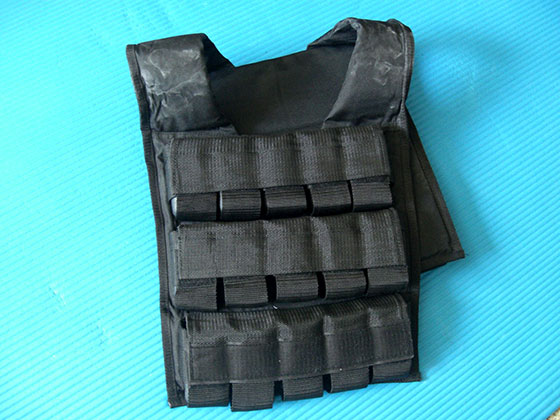
weighted vest
Between Feet– dumbbell pinched between the feet during the movement
Band Resisted
Bands are attached to dumbbells on the floor with the other end looped around a weight belt that is worn by the lifter. As the lifter performs the movement, the band is stretched, making the lift harder at the top of the movement. Some coaches argue that this variation isn’t effective due to the inherent strength curve of the chin-up, but nevertheless many strong lifters have employed the band-resisted method with success.
Advanced
Drop Sets
After the initial set is completed, the weight is reduced to allow for another set to be completed with around the same rep range, with little to no rest in between. An example for this for a lifter that can complete a 5RM chin-up with an additional 90lbs of external loading follows. The lifter loads up three 25 pound plates on a dip belt and performs 5 reps with the 75lbs, removes a 25 pound plate, performs another 5 reps, removes a 25 pound plate, completes another 5 reps, removes the belt and completes as many reps as possible with bodyweight reistance. This can be brutal! Don’t believe me? Give it a shot.
Side-to-Side
For the side to side pull-up, perform the concentric portion of the pull-up by raising your body upward while simultaneously pulling your body to one side (say the left side). This will require you to use your left side musculature to a greater degree than your right side. Return to starting position, then raise your body toward the right side, which will require you to use your right side musculature to a greater degree than your left side. This is a stepping stone to being able to perform 1-arm chin-ups.
One-Arm Braced
Perform a chin-up using 1 arm on the chin-up bar, with the other arm to the side bracing and providing stability. The non-working arm is functioning to prevent shifting and to provide a minimal amount of assistance to the movement.
Once you’re proficient at these, you can practice doing them without assistance. I don’t know too many lifters who can pull off a true one-arm pull-up though, but I do know they’re out there!
21’s
21’s break the movement down in 3 separate ranges of motion. You’ll perform 7 repetitions in each range, for a total of 21 reps. The first phase will focus on the top portion of the chin-up. The lifter will perform 7 repetitions starting with the chin over the bar and lowering himself half way down then back up. Next, the lifter will perform 7 repetitions in the bottom half of the movement, stopping at half way up and reversing back down. Finally, the lifter will perform 7 full range repetitions to complete the set. These are quite advanced, but feel free to change the reps up as there’s probably nothing magical about 7’s or 21 – this is just gym tradition.
Conclusion
Hopefully this article has taught you something new and inspired you to try to improve your pull-up performance. Experiment with the various grip widths, variations, and set/rep schemes to help you come up with a plan and figure out what works best for you.


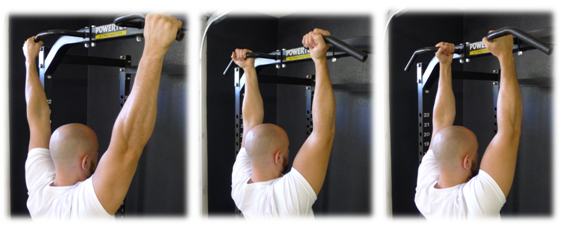
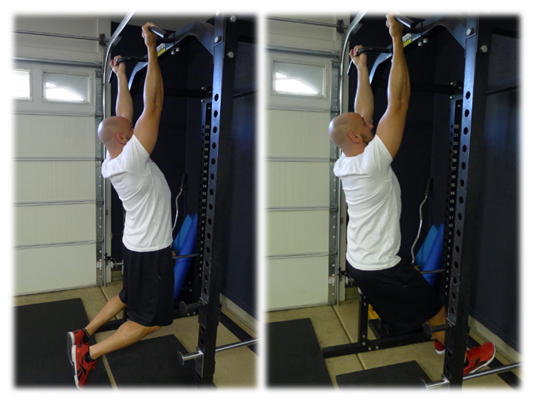

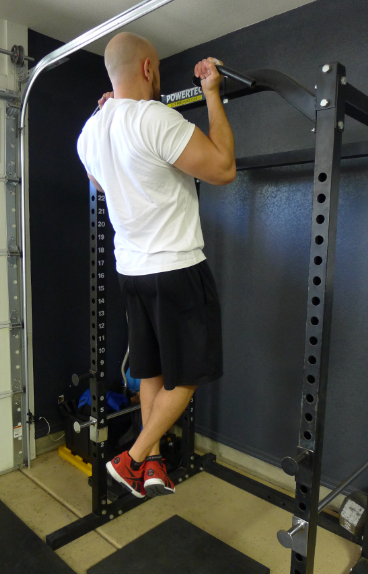
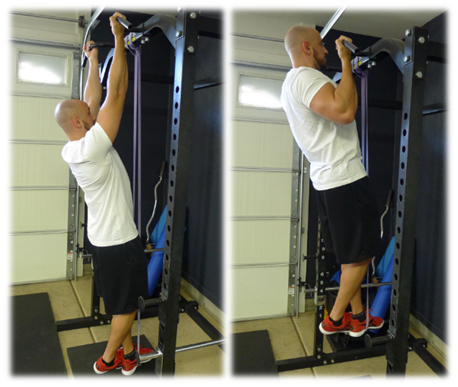
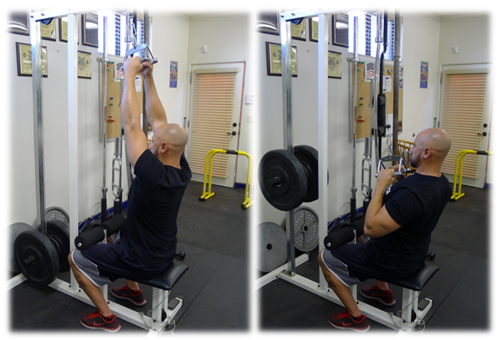
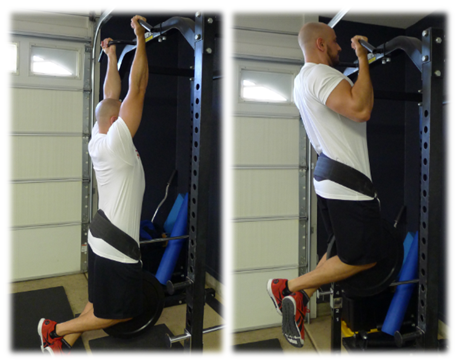
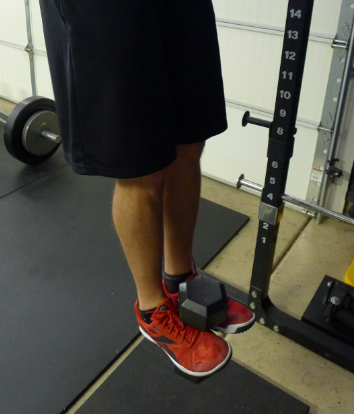
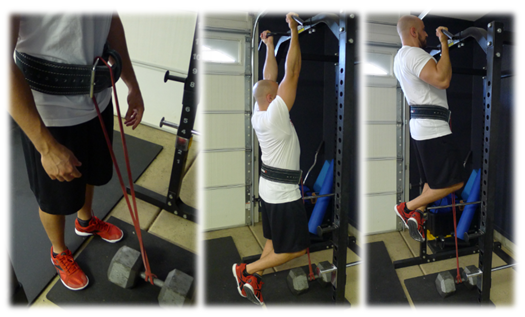
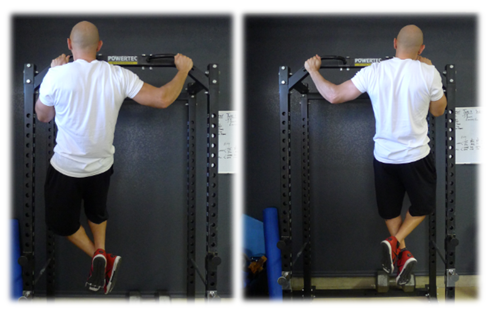






Great article. Thanks for sharing Bret. I’ve read a few things on resistance band assisted chin ups; pro’s and con’s. What are your thoughts?
I read Chad Waterburys article on chin ups suggesting that, for longevity and considering an individuals biomechanics, chins from rings would be an important addition or a substitution for straight bar chins, for shoulder/elbow/wrist health. Again, just curious to your findings. Thanks again!
Nic – I actually like band resisted chins, but some coaches don’t due to the strength curve. If you’re strong and powerful at chins, then you can do them explosively and it might increase the time spent accelerating (sort of like with band speed deadlifts).
I agree with Chad – ring pull-ups are great (and very easy on the shoulders for most folks). Funny story – I visited Chad and he had me try ring dips. I could do 3 reps with 135 lbs of extra loading with dips, but I struggled to just get one rep with bodyweight with the rings. Chad was cracking up. Ring chins aren’t nearly as hard as ring dips though.
That you have an opinion on the chin-ups crossfit?
Hi Jaime, the Kipping pull-up is a technique used by Crossfitters and some gymnasts. I personally don’t like them as I’m more of a bodybuilder/powerlifter type, but if I was in Crossfit or gymnastics, I’d do them. I like more strict chins/pull-ups as I feel they’re better at developing strength and muscle.
Great article Bret. What are your thoughts on doing very heavy negative chin-ups? Where you attach a weight belt and weight, try to lower yourself in 6-10 seconds, then climb back to the top and do it again until you have a tough time controlling the negative for the prescribed amount of time. Do you think something like this is too draining/requires too much recovery time to actually improve your body weight max reps?
Hi Sam, I’ve never done that. It could work, but for some reason I like heavy negatives more for pressing movements (bench, squat) than pulling movements (chins, deads). Good question!
My favorite weighted pull up technique is to hold the dumbbell just above my knees, and the cross my feet behind me to hold it up. Works like a charm.
Thanks Em! Good to know. Never tried them that way.
Hi Bret
Pavel’s grease the groove program has always fascinated me. It is so far from the HIT approach. It can be very practical as he describes in the original article about the chin up bar in the kitchen doorway. Can you please explain the benefits of the grease the groove approach, why it works and why it is so important to stay away from failure?
Thanks for all the great posts.
Martin
Martin, it’s just a way to train very frequently as you stay away from excessive fatigue so you’re always pretty fresh.
Bret, thanks for all the good info. I have worked up to doing 7 to 9 sets of 4 reps, full rom, neutral grip pull-ups.(my shoulders prefer the neutral grip) How many sets I do is determined by what kind of day I have had at work. My job sometimes involves a lot of pulling. Pull-ups are followed by Deadlifts, rows and usually pullovers, 3-4 sets of 6-12 reps. ( lower reps on DL, higher on rows and pullovers ) This is done once a week. My other wo days will consist of a day each of shoulder press and accessory lifts, squat, RDL and accessory lifts and bench press and accessory lifts.
I usually FEEL like my back has recovered 2 days after “back day”. In your opinion, could I do pull-ups again in the same week and make gains? Or would this fall under overreaching ? Anything you would recommend? I have made steady gains using multiple sets and not going to failure until the last couple of sets.
Chuck, I definitely think you could hit pull-ups again four days later and still have three days to recover for the next week.
Thanks!
Wow thanks for this Bret. I’m not joking — this article, and the hypertrophy article you link to, are the best resources on training I’ve read for several years. I kinda reached stage in my off-season hockey training where I’m getting bigger and probably compromising strength so this article is a wake up call.
It is nice to see validation that some of the rep schemes I’m using (Pavel’s GTG and cluster sets) are worth throwing into a routine.
Your 21 protocol is like the rock climbers “frenchie” but reversed. Those work well for lock off training. Great work Bret 🙂
Bret what is your take on the gymnastic hollow position pullup versus normal pullup?
Hi Bret,
Just wanted to ask if you could give me some advice. It’s taken me about two months to work up to be able to do one chin up. I did 3-4 sets of 5 chin ups with one foot on a chair.
I can now do one rep but only 3 or 4 a day after which I seem too fatigued to do any more. So after that I add a few sets with one foot on a chair.
Just wanted to ask as I’ve recently been reading practical programming, should I take a day off to recover for strengthwise? or Keep greasing the groove and doing them daily and as often as possible?
I’m really raring to get to 2 chin ups.
thanks
My chin-ups seem to be improving with overall strength gains, but my overhand-grip pull-ups aren’t improving much at all, even though my back strength has increased. Any tips for combatting this, especially for guys with longer arms?
Thanks Bret!
Bret, this is a really good comprehensive article on pull ups/chin ups/etc. I think vertical pulling strength is an essential skill, yet many folks tend to neglect this aspect of training rather substituting solely smaller auxiliary exercises in an attempt to develop pulling strength.
Of course this could be said for most of the usual “health club” type of gym goer. Nevertheless, there is no substitute for actually being able to pull your body from a hanging position to getting your chin above the bar.
I’m by no means a paranoid individual, but I do like to work at constantly improving and having what I often refer to as “just in case” real world strength skills. Being able to pull myself over a wall, fence, or some other obstacle in a moment of need just somehow seems like a good idea to me. I like do the same for my students as well. Just saying. 🙂 Once again thanks for the share Bret.
I have always struggled with pulls/chins and wonder if it is my form. I think that this helps. I like the EDT but unsure if its done daily for each week or just once a week for 4 weeks. Thanks for the great info Bret!
Brett, a brilliant and informative article on an exercise ppl just take for granted.
This will improve my regime tenfold……..thanks!!!
I was really excited when I saw this article. I have been working on my neutral grip pull-ups for a long time and struggle to get the number higher. I think its a mental thing with me. I have tried adding weight and that did help a lot, bodyweight felt so much easier. I cant wait to try the drop sets. I don’t know why I haven’t even thought of it myself. Great early morning read!!!
Bret, this is the clearest and most helpful article on chinups and pullups I have seen anywhere. I have never before read a clear explanation of the different hand positions and what differences there are between them. I appreciate the way you make the extra effort to write clearly and explain things clearly.
Also, on the technical side, your columns are easy to read on my phone. Unlike some other articles I read from other writers, the column width fits exactly on my phone’s screen, so I can read a whole line without scrolling from side to side. Keep up the good work!
Hey Bret, you said, “During the chin-up, the scapula SHOULD MOVE. The recent outburst of the cue to keep the shoulders down and back left some trainees down for the count” and I have to say you nailed it! My profs and S&C mentors always cued us on this and despite adhering to the down and back technique, at a weight of 218 I’ve managed to always be able to perform between 8-10 reps at most, when I’m fresh. After reading this and allowing my scaps to move, I cranked out 16, rested 2 min and cranked out another 14. Usually on a good day it’s 10, 8, 4, 4, 3. I have changed nothing but the technique, and my shoulders and neck felt uninhibited for the first time in many, many years! Thanks!
Hi Brett,
Thanks for the informative article. I have a question regarding my own issues with form on the chin up, hoping you could offer some advice?
I have always done parallel grip chins but I feel once my lats have locked out half way up, my chest and arms take over the movement. In this situation, my mind is thinking of pulling myself straight up but the pecs get heavily involved in the movement. Also, my neck is particularly sensitive and if I chicken neck to try and finish the movement, I suffer pain in the neck/upper traps for days after. Also, this method I find increasing reps/weight is very slow.
I have begun to experiment just today with cueing myself to lead with my chest up. This creates a slight arch in my mid back and protects my neck. I also feel the lats contribute a lot more to the movement. My concern with this method however is that once I get 3/4 of the way up, my lats have fully contracted and I can’t move any further. However I can bust out 6-7 more reps getting to that same position each time.
Do you believe my second method would likely work better in the long term for hypertrophy?
Hi Brett,
I can not do one chin up sadly.. i just bought three different sized assistance bands. I’ve read about ladders and doing negatives as the best ways to help me get to my first few chin ups and yourcarticle here touches on those methods.
I lift 3 days a week as well , can you give me an idea or some program template using bands and or negatives that i can use during the week without affecting my recovery and progression on the lifts??
Thanks,
Kevin
Hi Bret.
Can you help me with one question?
In High Frequency training how many days should i work during a week?
Great article, I had been dealing with back problems for over a year and a half doing weight machines to maintain back strength. I really wasn’t getting anywhere and being almost 40 yrs old I thought I couldn’t do anymore strength. A friend of mine advice me to start doing pull ups. I was horrible at doing them. I eventually did negatives by using a ply metric box or a chair to get me to the bar. I found out for myself it was better to do neutral grips for this progression because the over hand and under hand put tremendous amount of stress on the joints particularly my elbow. The neutral grip takes the stress away to allow me to focus on the form better. With in a couple of weeks of doing eccentric pull ups I gained 4 reps per set!! I was very excited and it also helps me with other upper body exercises as well!:)
Nice article, I have been doing eccentric neutral grip chin ups for a couple of months now and it has done wonders for me.:) It is hard to be consistent with the other grips because of my elbows.
Great article Brett, I wanna ask you about the Novice client, the Top Position Isoholds that you write in your article. How many times we must do the top position Isoholds (protocol, sets ,reps etc) ?
Thank you